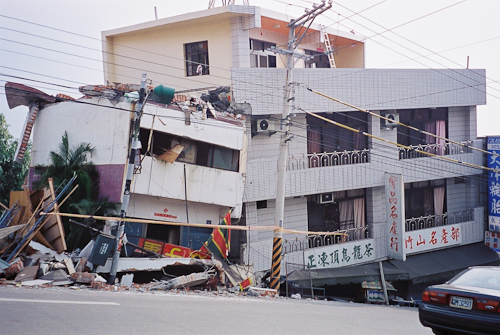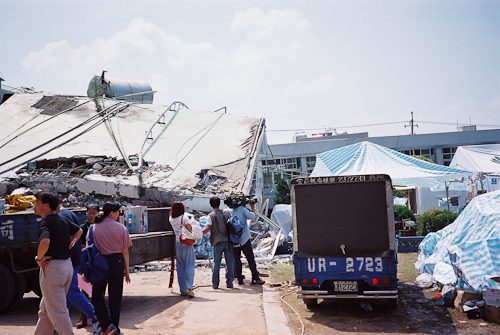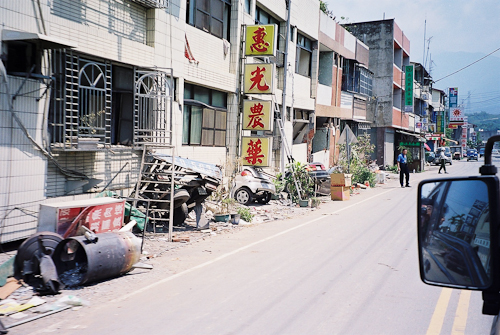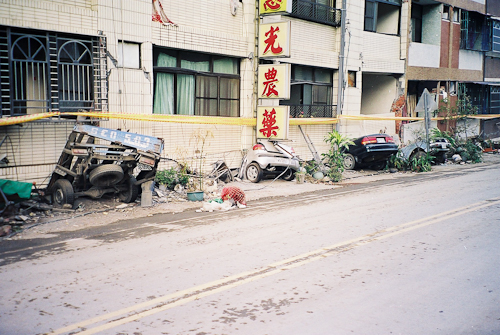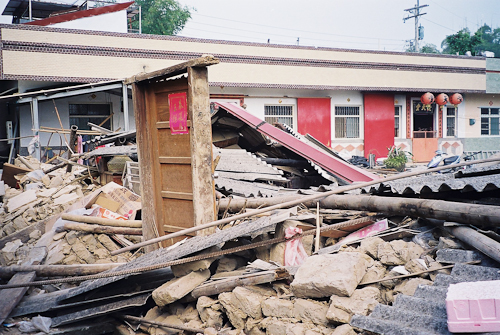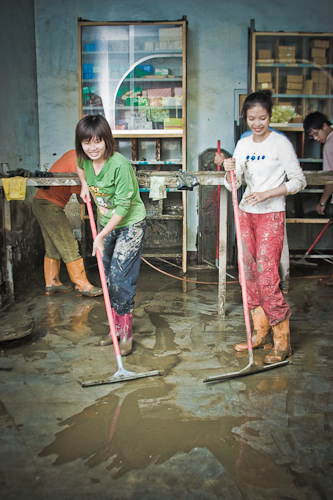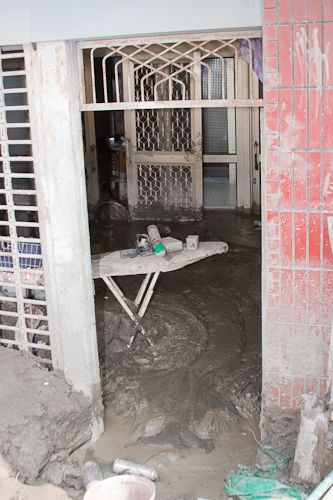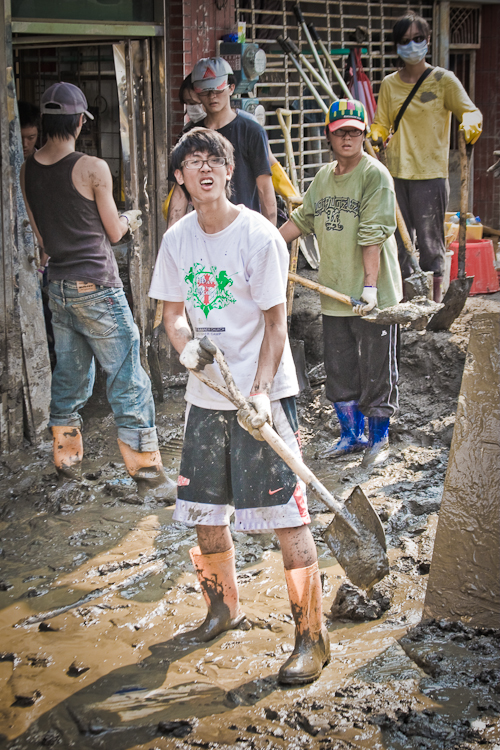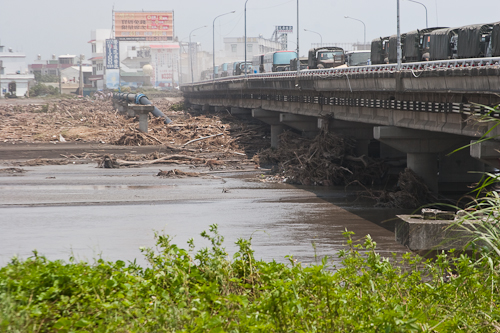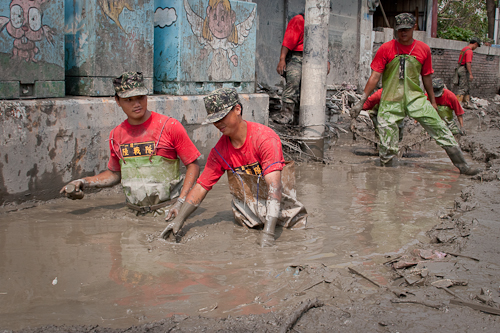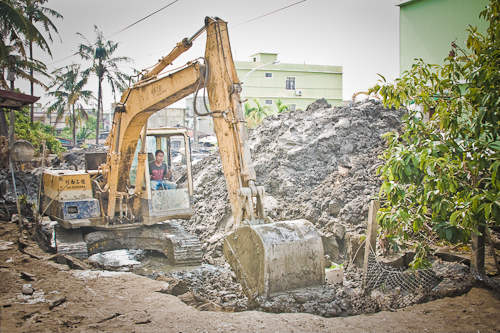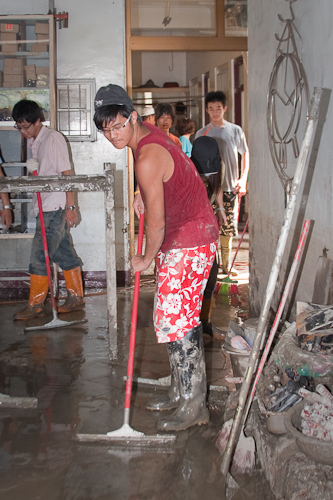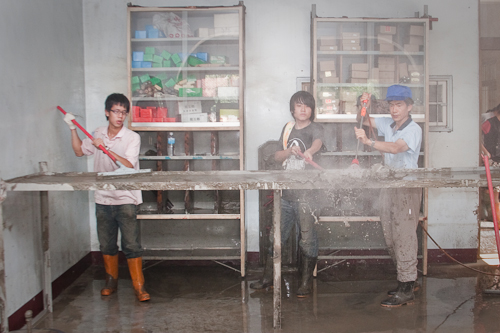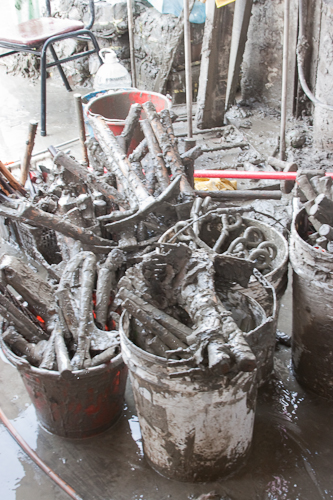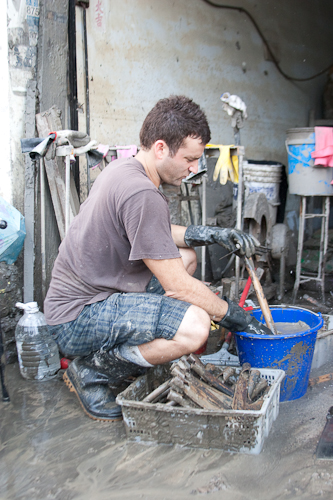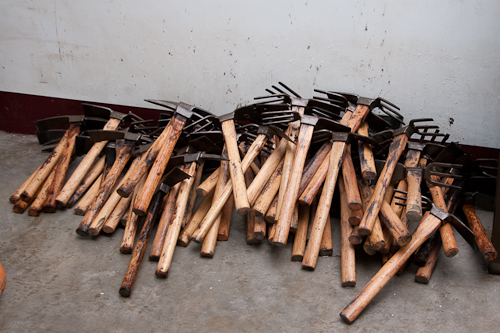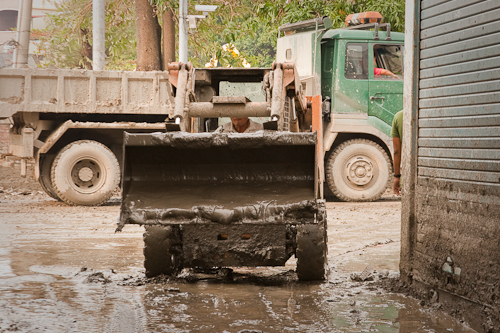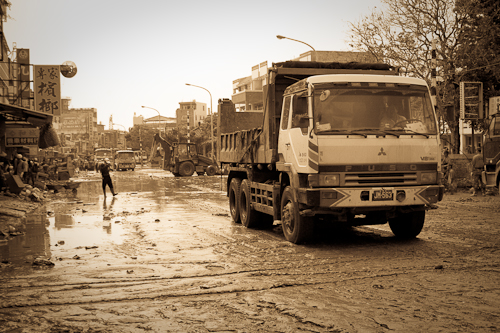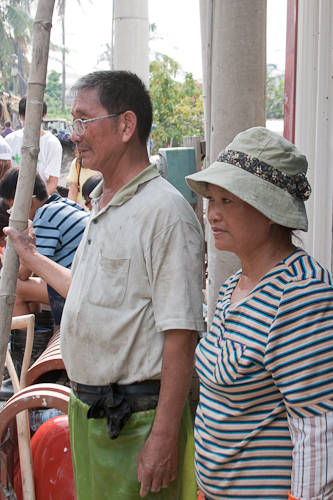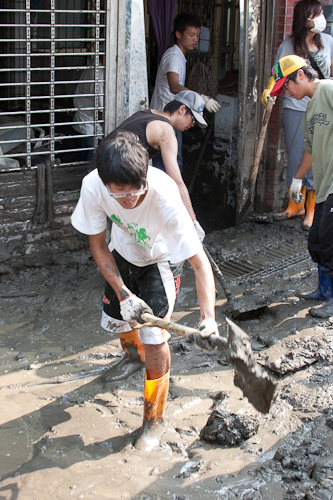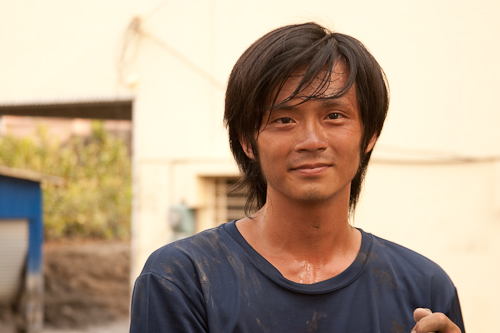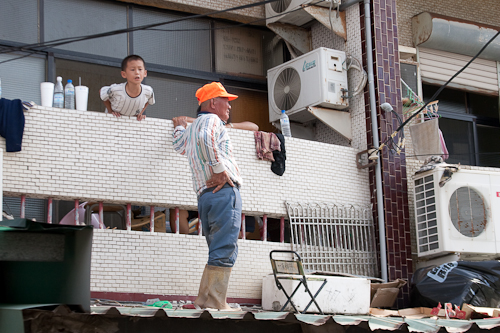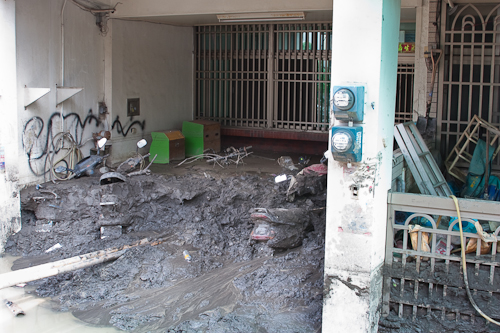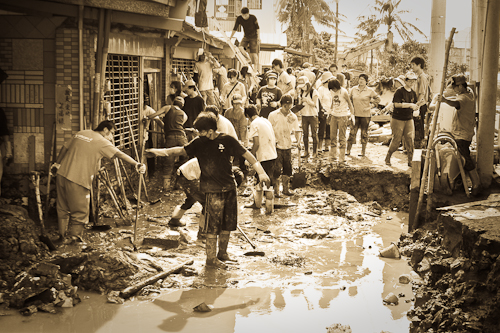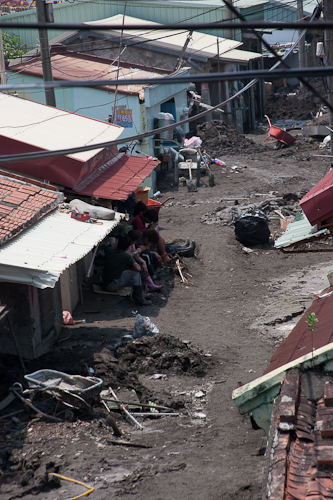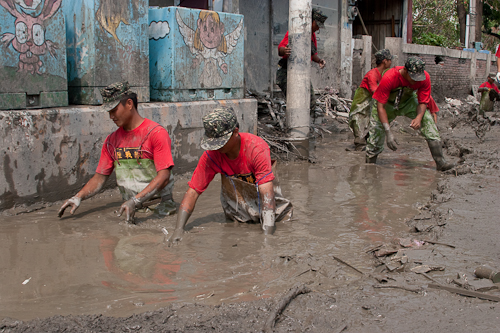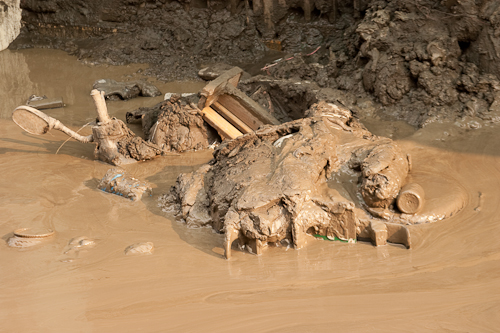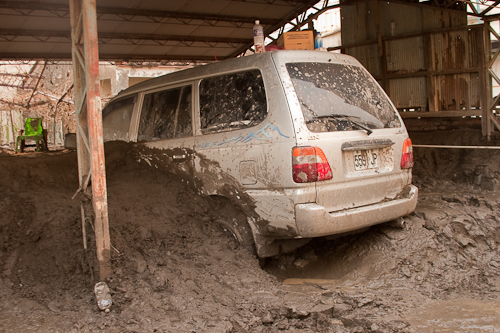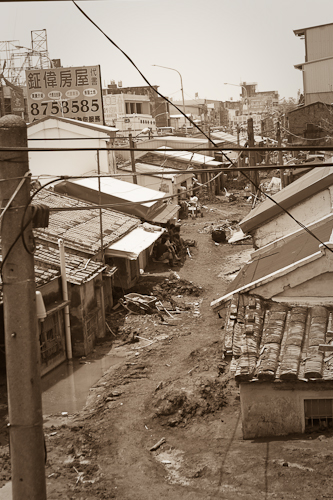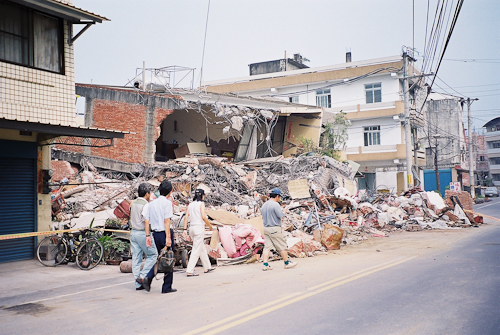
Collapsed school after 1999 ChiChi Earthquake. A tent city was set up on the playing field behind this building.
This article follows on from a previous one that you can find here and previous posts related to this one can also be found in the August archives
The rescue phase of disaster response continues until those who are in immediate danger are brought to places of relative safety. Since the last post we were back in contact with my wife’s family to discover that they had neglected to inform us that they had been evacuated from their village because a landslide had resulted in an ‘artificial’ lake forming high up in the mountains. There was a fear that this would suddenly burst causing flooding similar to that in Linbian further downstream near where they live but the danger has abated and they are now back in their home.
The middle phase of the recovery process, which I term the relief phase, begins whilst the last parts of the rescue phase are still happening. Survivors still have considerable and varied needs and it is often at this stage that volunteer organizations are able to lend a significant hand. In this article I’ll look at some of the different ways church volunteers have been involved in this both after Typhoon Morakot, last month and the ChiChi earthquake 10 years ago this month.
Generally speaking during the relief phase people need places of refuge, supplies of food, water and clothing, various practical services, emotional and spiritual support and help to clear up.
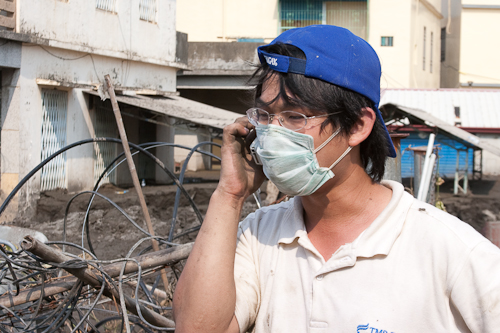
Ian, one of my colleagues at Banner Church, helps coordinate operations during the clean-up in Linbian after Typhoon Morakot last month
After the earthquake there were serious aftershocks for over a week so people generally preferred to live outdoors and tent cities sprung up all over the place. Tents and sleeping bags were needed for this, indeed the island ran out of tents. There were tented communities in most parks and the playgrounds of the schools (almost all of which had suffered building collapse). After the typhoon those whose homes had been destroyed or who had evacuated temporarily where housed in community halls, churches and temples. Mainly these were folk who had been living in the mountains. Some refugees then went to stay with relatives around the island. On the plains where most of the damage was caused by flooding and mud many staid on, ‘camping out’ on the upper floors of their houses until the mud was cleared.
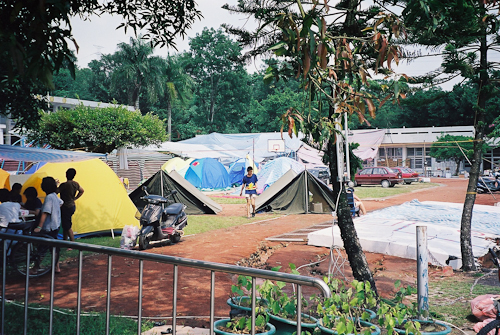
A tent city in a smaller elementary school
There were a number of ways churches got involved in this phase after both the earthquake and the typhoon. My involvement after the earthquake was mainly taking relief supplies out to people in mountainous towns and villages. Individuals and companies were quick to deliver donated supplies to relief supply centres that were set up. My wife used her admirable organizing skills to help set up the church centre in Taichung. Nearby the media also set up a centre and the two coordinated operations as different supplies were donated to each.
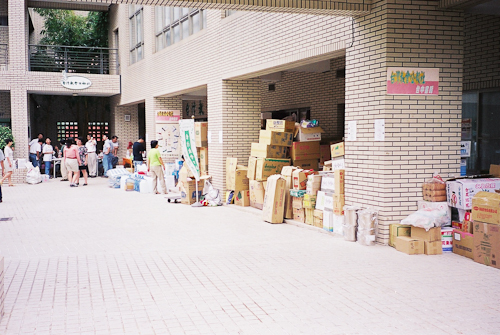
The Taichung relief supply centre organised by churches after the 1999 earthquake. Four wheel drive vehicles set off from here with supplies for the mountains.
We would get a phone call from a town or village pastor saying what they needed and then we would fill up a 4 wheel drive mini-bus with these supplies and would then set out with two drivers for the long journey to the affected areas. Sometimes we would need to go off road in order to get past rock slides, always watching out for further collapses as we went. It was necessary to negotiate rocks the size of cars which had blocked half the road and a few hours after one journey an aftershock brought a 12 story building crashing down across the road I had travelled on.
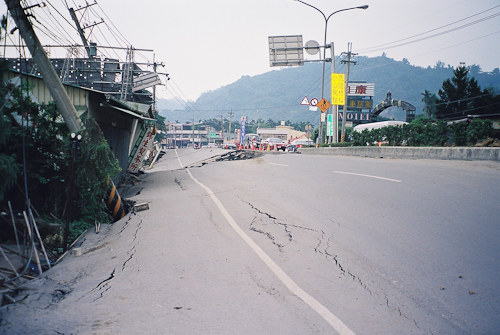
"The Road Less Travelled." Getting supplies through after the earthquake required negotiating many obstacles
As well as delivering supplies churches helped out in other ways. Some joined the tent cities to provide food and simple amenities as well as emotional and spiritual encouragement. In one camp I found one group doing hair-cutting and massage for the elderly and another running a children’s programme. One of the parents commented that it was the first time she had seen her child smile since the quake.
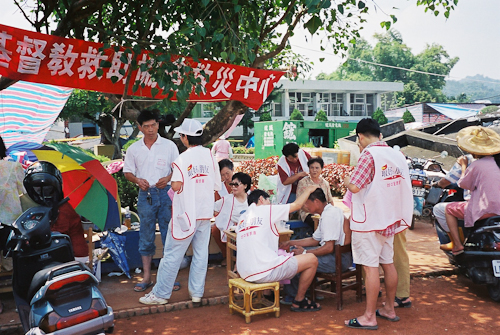
Church volunteers giving haircuts to and praying with victims of the 1999 earthquake in a tent city
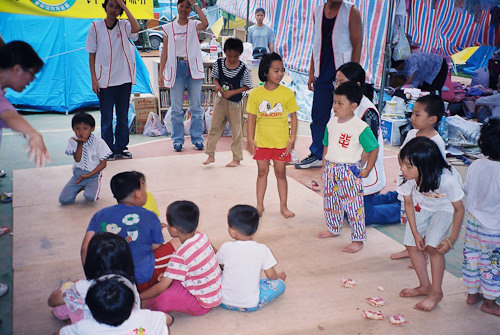
A children's programme run by volunteers from Taiwan's churches in a tent city after the 1999 earthquake.
After the typhoon the Chinese Christan Relief Association assigned different churches to different areas. My friend, Robb, with another church in Taichung went to the Evacuation point at Chishan that you may have seen on the TV news report. This was where the helicopters brought survivors to. They set up a stall there providing water and food and a listening ear to anyone who needed it. This included some of the rescue teams as well.
Banner church, as you will have seen from the posts below was one of several helping with the clean-up work from the floods in Linbian. This has now made significant progress and many volunteer groups, including ours have been able to wind down their operations. The army still maintains a presence there.

Temporary help points set up in the earthquake disaster zone by Taiwan's churches during relief operations, such as this one run by the Presbyterians, paved the way for Counselling and assistance centres set up during the Rebuilding phase.
Again there is a gradual change-over from the Relief to the Rebuilding phase which will cover briefly in another article.

















